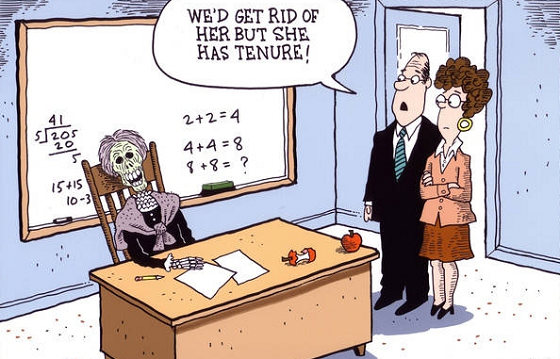 The augmented reality (AR) game, Pokémon Go, has taken the world by storm as players roam the real world catching Pokémon and battling in Pokémon gyms. The game has set 5 records since its launch in July 2016 — including the most revenue by a mobile game in its first month ($206.5 million). Nintendo’s stock doubled 15 days into the release, adding $7.5B in value, but then settled back into a mere 50% increase when it became clear that Nintendo was a partner with limited ownership in the company that developed the game (Niantic, a Google spinoff). Although the game is free, users can make purchases in the app store to support their Pokémon ‘hunting’. The bewildering success must clearly be keeping Niantic’s CEO, John Hanke, and his crew awake at night. Besides the operational issues related to scaling up, intellectual property (IP) had become a big issue. A slew of imitators were emerging as well as a number of companies trying to steal the game’s data content and algorithm. In addition, the formidable international expansion faces roadblocks in the most populous Asian countries while potential users were impatient. There were many additional potential revenue sources to be tapped and explored such as the recent win-win partnership with McDonalds Japan. Moreover, while getting gamers out and about was good, there were a number of unintended consequences. On the plus side, many entrepreneurs were finding ways to make money from the game — for example restaurants could lure in customers if there was a Pokestop nearby. At the same time, users and non-users worried about possible injuries, trespassing, and invasion of privacy among other things. Naturally, this makes an outstanding ripped-from-the-headlines case for strategy courses. It is a great vehicle to cover key topics such as entrepreneurship, strategic alliances, internal analysis/capabilities, and external analysis. The following are some materials that are useful for the case:
The augmented reality (AR) game, Pokémon Go, has taken the world by storm as players roam the real world catching Pokémon and battling in Pokémon gyms. The game has set 5 records since its launch in July 2016 — including the most revenue by a mobile game in its first month ($206.5 million). Nintendo’s stock doubled 15 days into the release, adding $7.5B in value, but then settled back into a mere 50% increase when it became clear that Nintendo was a partner with limited ownership in the company that developed the game (Niantic, a Google spinoff). Although the game is free, users can make purchases in the app store to support their Pokémon ‘hunting’. The bewildering success must clearly be keeping Niantic’s CEO, John Hanke, and his crew awake at night. Besides the operational issues related to scaling up, intellectual property (IP) had become a big issue. A slew of imitators were emerging as well as a number of companies trying to steal the game’s data content and algorithm. In addition, the formidable international expansion faces roadblocks in the most populous Asian countries while potential users were impatient. There were many additional potential revenue sources to be tapped and explored such as the recent win-win partnership with McDonalds Japan. Moreover, while getting gamers out and about was good, there were a number of unintended consequences. On the plus side, many entrepreneurs were finding ways to make money from the game — for example restaurants could lure in customers if there was a Pokestop nearby. At the same time, users and non-users worried about possible injuries, trespassing, and invasion of privacy among other things. Naturally, this makes an outstanding ripped-from-the-headlines case for strategy courses. It is a great vehicle to cover key topics such as entrepreneurship, strategic alliances, internal analysis/capabilities, and external analysis. The following are some materials that are useful for the case:
Contributed by Aya Chacar and Russ Coff


 Firms often make errors in selecting governance forms and the scope of the firm. This is one common reason firms must undergo painful periodic restructuring programs. If only managers could frame these problems more effectively and identify the key factors to make more informed decisions — in short, a primer on Transaction Cost Economics (TCE). Brian Silverman provides just that tool in a
Firms often make errors in selecting governance forms and the scope of the firm. This is one common reason firms must undergo painful periodic restructuring programs. If only managers could frame these problems more effectively and identify the key factors to make more informed decisions — in short, a primer on Transaction Cost Economics (TCE). Brian Silverman provides just that tool in a  Class participation is typically a major component of grades in strategy courses. Some students are quite comfortable participating. Others not so much. This video from
Class participation is typically a major component of grades in strategy courses. Some students are quite comfortable participating. Others not so much. This video from  Some fear that eventually and robots will be
Some fear that eventually and robots will be  Strategic Alliances don’t make the news the way M&A do so some may struggle for examples. It is especially helpful to make students aware that, while Alliances may be less risky than M&A, there are still risks that need to be analyzed. Tom Petty provided a useful example to apply the
Strategic Alliances don’t make the news the way M&A do so some may struggle for examples. It is especially helpful to make students aware that, while Alliances may be less risky than M&A, there are still risks that need to be analyzed. Tom Petty provided a useful example to apply the  This is another in our series of explorations in
This is another in our series of explorations in  How do firms modify their products so they will be well-received in the most promising global markets? Case in point:
How do firms modify their products so they will be well-received in the most promising global markets? Case in point:  Why isn’t the BCG matrix dead as a framework? I still consistently find that my students have been exposed to it (generally in Marketing). They don’t even understand that it is a framework for internal capital markets (where firms add value by serving as a source of funding) or that it is hopelessly flawed. It’s a dog, divest right away. If the sale generates cash, funnel it to any other management framework (even SWOT) and I’m sure it will create value.
Why isn’t the BCG matrix dead as a framework? I still consistently find that my students have been exposed to it (generally in Marketing). They don’t even understand that it is a framework for internal capital markets (where firms add value by serving as a source of funding) or that it is hopelessly flawed. It’s a dog, divest right away. If the sale generates cash, funnel it to any other management framework (even SWOT) and I’m sure it will create value. The augmented reality (AR) game,
The augmented reality (AR) game,  Aldi has been crushing the competition for years and makes an excellent case of how organizational alignment can deliver a strategic advantage (cost in this case).
Aldi has been crushing the competition for years and makes an excellent case of how organizational alignment can deliver a strategic advantage (cost in this case).